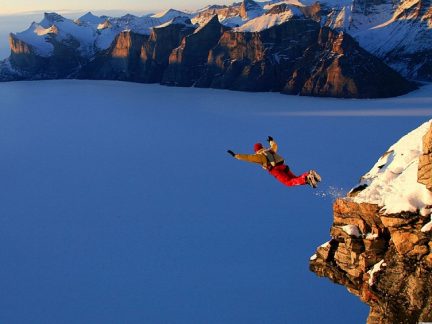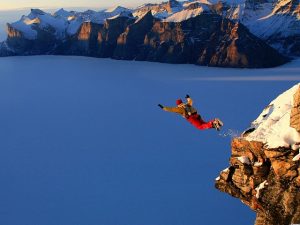Personality in extreme sports athletes


Last modified: 28-03-2020
The article presents the individual differences between athletes who practise extreme sports, not risky sports and those who do not practice any sport in the features belonging to five factor model of personality (ie. Big Five). To extreme sports researchers include any sport, which integral part is risk of serious injury or death, that is, inter alia, climbing, scuba diving, skydiving, downhill skiing and others.
1. Emotional stability
Emotional stability is the ability to control emotions and is the opposite of neuroticism. Persons receiving high scores on this scale are stable, patient, happy, serene and well cope with stress, and neurotics are unstable, impatient, tense, nervous and more easily stressed. The most emotionally stable are people who engage in extreme sports. They are good at controlling their emotions during sudden changes and remain calm during risky situations. High scores on this scale also attain athletes practising other disciplines. Emotional stability is a feature that is useful to them during the competition and tough workouts. People who do not practise any sports are clearly less stable than the other two groups.
2. Conscientiousness
The highest results in scale of conscientiousness also receive people who engage in risky sport. They are responsible, trustworthy, disciplined, hard-working, know how to get along with the members of the group to which they belong. A little lower, but also high performance levels receive other athletes. Both groups of athletes are more conscientious than other people, which are often undisciplined and lazy.
3. Extraversion
Generally the most extravertive are people who engage in extreme sports. Thy are dynamic, pervasive, social and communicative. People who engage in not risky sports are generally less extraverted and the lowest level on this scale reach people who do not practise any discipline.
Some scientists believe that due to the different nature of the various sports, people practicing different extreme sports disciplines should be tested individually, not as a single group. The argument is that despite the fact that according to the results of several studies generally people who engage in risky sports are more extraverted, many studies have shown that alipinists are – on the contrary – more introverted than average people. They are often individualists rejecting traditional standards and with their own moral principles. There are also timid, serious and calm. In a study that compared skydivers, students, soldiers and mountaineers, skydivers proved to be the most extraverted and climbers least.
4. Agreeableness
Those who get high scores on the scale of agreeableness are tolerant, loyal, warm and friendly, while those with low level are selfish, intolerant, suspicious, cold and hostile. The study does not confirm any significant differences between athletes who engage in extreme sports, “ordinary” sports and those who do not practise any discipline in terms of this scale.
5. Openness to experience
People characterized by high openness to experience are creative, original, sensitive and smart. There is no clear differences in this characteristics between those who practice risky discipline, and those who engage in not risky sports, but the two groups of athletes are more open to experience than persons who are not athletes.
References:
Tanja Kajtna, Matej Tusak, Renata Barić, Stojak Burnik „Personality in high-risk sports athletes”, Kinesiology nr 36/2004
Author: Maja Kochanowska






Add comment